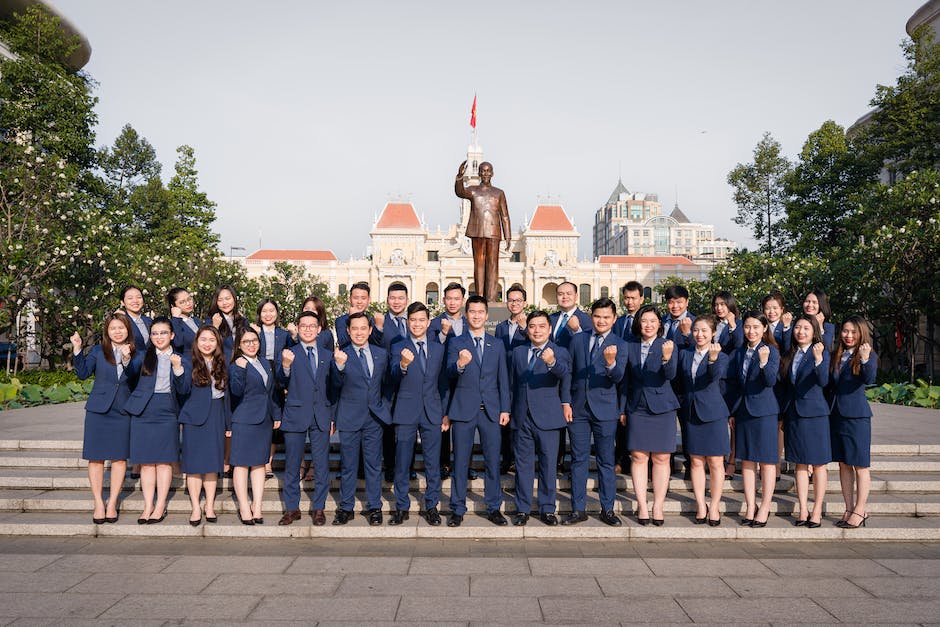Table of Contents
- Introduction
- Retirement Planning Made Easier: How the SECURE 2.0 Act Enhances Workplace Retirement Benefits
- Boosting Employee Financial Wellness: Exploring the Workplace Benefits of the SECURE 2.0 Act
- Attracting and Retaining Top Talent: The Competitive Advantage of SECURE 2.0 Act’s Workplace Benefits
- Strengthening Retirement Security: Understanding the Workplace Implications of the SECURE 2.0 Act
- Q&A
- Conclusion
“Empowering employees, enhancing retirement, and securing the future.”
Introduction
The SECURE 2.0 Act of 2022 is a proposed legislation aimed at enhancing workplace benefits for employees. It seeks to address various aspects of retirement savings, employee benefits, and financial security. This act aims to provide individuals with greater opportunities to save for retirement, improve access to retirement plans, and enhance the portability of retirement savings. Additionally, it aims to expand the availability of employer-sponsored retirement plans, increase the flexibility of retirement plan contributions, and promote financial literacy among employees. Overall, the SECURE 2.0 Act of 2022 aims to strengthen workplace benefits and improve the financial well-being of employees.
Retirement Planning Made Easier: How the SECURE 2.0 Act Enhances Workplace Retirement Benefits

The Workplace Benefits of the SECURE 2.0 Act of 2022
Retirement planning is a crucial aspect of financial stability, and the SECURE 2.0 Act of 2022 aims to enhance workplace retirement benefits. This legislation, which stands for Setting Every Community Up for Retirement Enhancement, builds upon the original SECURE Act of 2019 to further improve retirement savings options for employees. By implementing various provisions, the SECURE 2.0 Act seeks to make retirement planning easier and more accessible for workers across the country.
One of the key benefits of the SECURE 2.0 Act is the expansion of automatic enrollment in retirement plans. Currently, many employees fail to enroll in their workplace retirement plans due to inertia or lack of understanding. The SECURE 2.0 Act addresses this issue by allowing employers to automatically enroll their employees in retirement plans, with the option to opt-out if desired. This provision encourages more workers to save for retirement by removing the barriers to entry and ensuring that they have a retirement plan in place.
Additionally, the SECURE 2.0 Act introduces a new type of retirement plan called the Pooled Employer Plan (PEP). PEPs allow multiple small businesses to join together and offer a single retirement plan to their employees. This pooling of resources enables small businesses to access the benefits of economies of scale, reducing administrative costs and making retirement plans more affordable. By expanding access to retirement plans for employees of small businesses, the SECURE 2.0 Act promotes retirement savings among a broader segment of the workforce.
Furthermore, the SECURE 2.0 Act includes provisions to increase the age at which individuals must start taking required minimum distributions (RMDs) from their retirement accounts. Under current law, individuals are required to start taking RMDs at age 72. The SECURE 2.0 Act proposes increasing this age to 75, allowing individuals to keep their retirement savings invested for a longer period. This change recognizes the increasing life expectancy and the need for individuals to have more flexibility in managing their retirement funds.
Another significant aspect of the SECURE 2.0 Act is the expansion of retirement savings options for part-time workers. Currently, many part-time employees are excluded from participating in their employer’s retirement plans due to eligibility requirements. The SECURE 2.0 Act aims to address this issue by lowering the eligibility requirements, allowing more part-time workers to save for retirement. This provision ensures that all workers, regardless of their employment status, have access to retirement savings opportunities.
Moreover, the SECURE 2.0 Act includes provisions to enhance retirement savings for low-income workers. It introduces a new tax credit called the Small Employer Automatic Enrollment Credit, which provides incentives for small businesses to automatically enroll their employees in retirement plans. This credit helps offset the costs associated with implementing automatic enrollment, making it more feasible for small businesses to offer retirement benefits. By incentivizing small businesses to prioritize retirement savings, the SECURE 2.0 Act promotes financial security for low-income workers.
In conclusion, the SECURE 2.0 Act of 2022 brings several workplace benefits that enhance retirement planning for employees. By expanding automatic enrollment, introducing Pooled Employer Plans, increasing the age for required minimum distributions, and improving retirement savings options for part-time and low-income workers, this legislation aims to make retirement planning easier and more accessible. These provisions recognize the importance of retirement savings and seek to ensure that all workers have the opportunity to secure their financial future. With the implementation of the SECURE 2.0 Act, employees can look forward to a more secure retirement.
Boosting Employee Financial Wellness: Exploring the Workplace Benefits of the SECURE 2.0 Act
The SECURE 2.0 Act of 2022 is a proposed legislation that aims to enhance retirement security for American workers. While the act covers various aspects of retirement planning, it also includes provisions that can significantly benefit employees in the workplace. In this article, we will explore the workplace benefits of the SECURE 2.0 Act and how it can boost employee financial wellness.
One of the key provisions of the SECURE 2.0 Act is the expansion of automatic enrollment in retirement plans. Currently, many employees miss out on the opportunity to save for retirement simply because they fail to enroll in their employer’s retirement plan. The act seeks to address this issue by requiring employers to automatically enroll employees in a retirement plan, with the option to opt-out if they choose. This provision can greatly increase retirement plan participation rates and ensure that more employees are saving for their future.
Another important aspect of the SECURE 2.0 Act is the expansion of access to multiple employer plans (MEPs). MEPs allow small businesses to join together to offer a retirement plan to their employees, which can result in cost savings and administrative efficiencies. By expanding access to MEPs, the act aims to make it easier for small businesses to provide retirement benefits to their employees. This can be particularly beneficial for employees of small businesses who may not have had access to a retirement plan before.
The act also includes provisions to encourage employers to offer lifetime income options in their retirement plans. Lifetime income options, such as annuities, provide employees with a guaranteed stream of income in retirement. By incentivizing employers to offer these options, the act aims to provide employees with greater financial security in retirement. This can help alleviate concerns about outliving their savings and provide peace of mind for employees as they plan for their future.
In addition to these provisions, the SECURE 2.0 Act also seeks to expand access to retirement savings plans for part-time workers. Currently, many part-time workers are excluded from participating in their employer’s retirement plan due to eligibility requirements. The act aims to lower these requirements, allowing more part-time workers to save for retirement. This can be particularly beneficial for individuals who rely on part-time work as their primary source of income.
Furthermore, the act includes provisions to increase the age for required minimum distributions (RMDs) from retirement accounts. Currently, individuals are required to start taking withdrawals from their retirement accounts at age 72. The act proposes increasing this age to 75, allowing individuals to keep their retirement savings invested for a longer period of time. This can be advantageous for employees who wish to continue working past the traditional retirement age and delay tapping into their retirement savings.
Overall, the SECURE 2.0 Act of 2022 offers several workplace benefits that can significantly improve employee financial wellness. From expanding automatic enrollment and access to retirement plans, to incentivizing lifetime income options and increasing access for part-time workers, the act aims to enhance retirement security for American workers. By implementing these provisions, employers can play a crucial role in helping their employees save for a secure and comfortable retirement.
Attracting and Retaining Top Talent: The Competitive Advantage of SECURE 2.0 Act’s Workplace Benefits
The workplace landscape is constantly evolving, and employers are always looking for ways to attract and retain top talent. In today’s competitive job market, offering attractive workplace benefits is essential. The SECURE 2.0 Act of 2022 is a game-changer in this regard, as it introduces a range of benefits that can give employers a competitive edge.
One of the key benefits of the SECURE 2.0 Act is the expansion of retirement savings options. Under the Act, employers can now offer multiple employer plans (MEPs), which allow small businesses to pool their resources and provide their employees with access to affordable retirement plans. This is a significant advantage for employers, as it enables them to offer a valuable benefit that was previously only available to larger companies. By providing employees with a secure retirement savings option, employers can attract and retain top talent who value long-term financial security.
Another important aspect of the SECURE 2.0 Act is the expansion of automatic enrollment in retirement plans. Research has shown that automatic enrollment significantly increases participation rates in retirement plans. By making it easier for employees to save for retirement, employers can demonstrate their commitment to their employees’ financial well-being. This can be a powerful tool in attracting and retaining top talent, as employees are more likely to choose employers who prioritize their long-term financial security.
In addition to retirement savings options, the SECURE 2.0 Act also introduces new benefits related to student loan repayment. Under the Act, employers can now contribute up to $5,250 per year towards their employees’ student loan debt, tax-free. This is a significant benefit for employees burdened by student loan debt, as it can help them pay off their loans faster and reduce their financial stress. By offering this benefit, employers can differentiate themselves from their competitors and attract top talent who are looking for ways to alleviate their student loan debt.
Furthermore, the SECURE 2.0 Act includes provisions that promote employee wellness and work-life balance. The Act allows employers to offer tax-free reimbursements for certain qualified expenses, such as gym memberships and fitness classes. This not only encourages employees to prioritize their health and well-being but also demonstrates that employers value their employees’ overall quality of life. By offering these wellness benefits, employers can create a positive work environment that attracts and retains top talent who prioritize their physical and mental well-being.
Lastly, the SECURE 2.0 Act introduces new benefits for working parents. The Act allows employers to offer tax-free contributions to dependent care assistance programs, which can help employees cover the costs of childcare. This is a significant benefit for working parents, as childcare expenses can be a major financial burden. By offering this benefit, employers can support their employees in achieving a healthy work-life balance and attract top talent who value family-friendly workplace policies.
In conclusion, the SECURE 2.0 Act of 2022 introduces a range of workplace benefits that can give employers a competitive advantage in attracting and retaining top talent. From expanded retirement savings options to student loan repayment assistance, these benefits demonstrate employers’ commitment to their employees’ financial well-being. Additionally, the Act promotes employee wellness and work-life balance, as well as supports working parents. By offering these benefits, employers can create a positive work environment that appeals to top talent and sets them apart from their competitors. The SECURE 2.0 Act is a valuable tool for employers looking to attract and retain the best employees in today’s competitive job market.
Strengthening Retirement Security: Understanding the Workplace Implications of the SECURE 2.0 Act
The SECURE 2.0 Act of 2022 is a proposed legislation aimed at strengthening retirement security for American workers. This act, if passed, will have significant implications for the workplace, providing several benefits for both employers and employees.
One of the key provisions of the SECURE 2.0 Act is the expansion of automatic enrollment in retirement plans. Currently, many employees are not enrolled in a retirement plan simply because they fail to opt-in. The SECURE 2.0 Act seeks to address this issue by requiring employers to automatically enroll their employees in a retirement plan, with the option to opt-out if they choose. This provision will help increase retirement plan participation rates, ensuring that more workers have access to a secure retirement.
In addition to automatic enrollment, the SECURE 2.0 Act also aims to increase the default contribution rate for automatic enrollment plans. Currently, the default contribution rate is often set at a low level, resulting in inadequate savings for retirement. The act proposes increasing this default rate, encouraging employees to save more for their future. By doing so, the act aims to address the retirement savings gap that many Americans face.
Another important aspect of the SECURE 2.0 Act is the expansion of multiple employer plans (MEPs). MEPs allow small businesses to join together to offer a retirement plan to their employees, pooling resources and reducing administrative costs. The act seeks to make it easier for small businesses to participate in MEPs by removing certain barriers and providing incentives. This provision will not only benefit small businesses by providing a cost-effective way to offer retirement benefits but also benefit employees by increasing their access to retirement plans.
Furthermore, the SECURE 2.0 Act includes provisions to encourage lifetime income options in retirement plans. Many retirees face the challenge of managing their savings to ensure they last throughout their retirement years. The act aims to address this issue by promoting the inclusion of annuities and other lifetime income options in retirement plans. By providing a steady stream of income throughout retirement, these options can help alleviate the financial stress that retirees often face.
Additionally, the SECURE 2.0 Act seeks to expand retirement savings opportunities for part-time workers. Currently, many part-time workers are excluded from employer-sponsored retirement plans due to eligibility requirements. The act proposes reducing these requirements, allowing more part-time workers to participate in retirement plans. This provision will help address the retirement savings gap among part-time workers and provide them with a pathway to a more secure retirement.
Overall, the SECURE 2.0 Act of 2022 has the potential to significantly improve retirement security in the workplace. By expanding automatic enrollment, increasing default contribution rates, promoting MEPs, encouraging lifetime income options, and expanding retirement savings opportunities for part-time workers, the act aims to address the various challenges that American workers face in saving for retirement. If passed, this legislation will not only benefit employees by providing them with greater access to retirement plans but also benefit employers by promoting a more financially secure workforce.
Q&A
1. What are the workplace benefits of the SECURE 2.0 Act of 2022?
The SECURE 2.0 Act of 2022 aims to enhance retirement savings options for employees, providing them with increased access to retirement plans and potential tax advantages.
2. How does the SECURE 2.0 Act of 2022 improve retirement savings options?
The act introduces provisions such as automatic enrollment, increased contribution limits, and expanded eligibility for part-time workers, making it easier for employees to save for retirement.
3. What tax advantages are associated with the SECURE 2.0 Act of 2022?
The act includes provisions like catch-up contributions, allowing individuals aged 50 and above to make additional contributions to their retirement accounts. It also enhances the Saver’s Credit, providing tax incentives for low- and middle-income individuals who contribute to retirement plans.
4. How does the SECURE 2.0 Act of 2022 benefit part-time workers?
The act expands eligibility for part-time workers, allowing them to participate in employer-sponsored retirement plans. This provides part-time employees with an opportunity to save for retirement and potentially receive employer contributions.
Conclusion
The Workplace Benefits of the SECURE 2.0 Act of 2022 include increased access to retirement savings plans, expanded eligibility for part-time workers, enhanced tax credits for small businesses, and improved retirement plan options for employees. These provisions aim to promote retirement security and financial well-being for workers in the United States.




